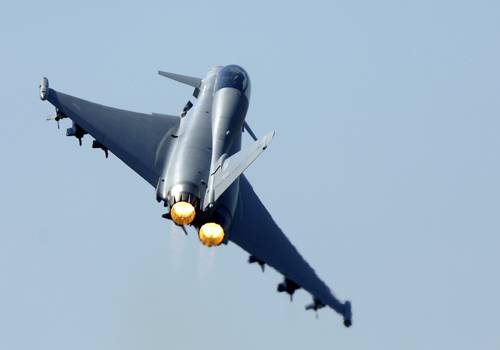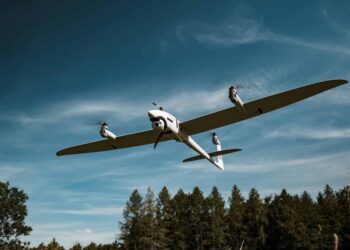The Commons Committee of Public Accounts publishes a report which, on the basis of evidence from the Ministry of Defence, examines the past decisions taken on Typhoon and looks at improvements that the Department can make to its delivery model.
The Committee’s 30th report of this Session looks at the improvements that the Department can make to the delivery model to get more from industry in terms of reduced costs and better performance in the future.
Speaking about the release of the report, the Rt Hon Margaret Hodge MP, Chair of the Committee of Public Accounts, said:
“The history of the Typhoon fighter aircraft represents yet another example of over-optimism, bad planning and an unacceptably high bill for the taxpayer. The MOD is now buying 30 per cent fewer Typhoon fighter aircraft than originally planned, the cost of the project is now expected to be £3.5 billion more than was originally approved and if we take all expenditure into account, the cost of each aircraft has increased by 75 per cent.
The Department was unable to give us a coherent explanation of its 2004 decision to equip the early Typhoons with ground-attack capability, or of its subsequent decision not to use it. The Department could also not adequately explain why it cancelled the third phase of the contract in 2004 on the grounds it did not need the capability, simply to reinstate the third phase in 2009 at a cost of £2.7 billion.
The MOD does not appear to be making best use of the fighter aircraft. Lack of spares forces the MOD to ground and cannibalise some fighters to keep other fighter planes in service. Lack of availability of aircraft means pilots aren’t properly trained to fly the fighter planes. Indeed only eight pilots are trained to carry out ground-attack missions and five pilots have been grounded.
This pattern of decision-making is more about balancing the books in the short-term rather than ensuring value for money over time.
Reducing the size of the defence budget will require more collaboration with EU partners. If done well, it should deliver cost and military benefits. But if not done well, as in the case of Typhoon, it can result in huge delays and spiralling cost increases. The MOD must examine the collaborative projects it has been involved in to understand better the factors contributing to success and failure.”
Background
Typhoon is a multi-role aircraft capable of both air defence and ground attack. The Department entered into a contract for the first 53 aircraft in 1998, and is buying Typhoon in collaboration with Germany, Italy and Spain. The total cost to the United Kingdom of buying the aircraft and supporting them in service over the next 20 years is estimated to be £37 billion.
Typhoon is a highly capable air defence fighter and is now being used to defend United Kingdom and Falkland Islands airspace, as well as being part of recent efforts to impose a no fly zone in Libya. However, Typhoon was commissioned during the Cold War to serve a different set of priorities and it took 20 years, and a higher budget, from the start of development to the aircraft being deployed operationally.
History of Eurofighter Typhoon
The Department originally planned to buy 232 aircraft. However, in light of changed operational requirements and significant funding constraints arising from the pressures of the defence budget, it is now ordering 160 aircraft and will retire the 53 oldest aircraft by 2019, leaving a long-term fleet of 107 aircraft.
It would seem that the third phase of this contract, for the last 16 aircraft, was driven by contractual obligations or by operational need. Overall, it is costing the Department £20.2 billion, £3.5 billion more than it first expected, to buy a third fewer aircraft. This is equivalent to the purchase cost of each aircraft rising by 75%, from £72 million to £126 million.
In 2004, the Department decided to retire the ground attack Jaguar aircraft early and to spend £119 million to install ground attack upgrades on early Typhoons to cover the resulting capability gap. These upgrades were ready for use by 2008. A year later, the Department decided to retire the air defence Tornado F3 aircraft early to save money and therefore re-prioritised Typhoon away from ground attack missions to air defence tasks. The Department only announced last week, after the Committee report was agreed, that it was deploying four Typhoons in a ground attack role in Libya.
Problems with the availability of spares mean that Typhoons are not flying the hours required and the Department is forced to cannibalise parts from other aircraft to maximise the number of aircraft available on a given day. As a result, it is not fully training all its pilots, and only eight of the 48 Typhoon pilots were capable of undertaking ground attack missions on Typhoon. In addition, the Department had to ground five pilots temporarily in 2010. The problem is likely to be exacerbated as the number of Typhoons in-service increases and they are used in a wider range of operational roles.
Ongoing costs
Support costs are budgeted at £13.1 billion, but reviews by the Department have suggested costs could be as high as £16.6 billion across the life of the aircraft. The Department has identified potential savings of £3.5 billion to keep support costs within budget, albeit that this budget was meant to cover 232 aircraft not the 160 now being bought.
We are concerned that the Department has budgeted for cuts to meet overall expenditure targets and that, over time, the costs will creep up again. To ensure good value from this expenditure, the Department will need to both reduce the cost and increase the timeliness of future collaborative spares and repairs contracts. At present, the contracts do little to incentivise better industry performance and to penalise failure.
The Department has appointed a Senior Responsible Owner (SRO) to be the person accountable for delivering each major procurement project. However the SRO on Typhoon has limited decision making powers and merely co-ordinates activity. That is not good enough.
[Download not found]










